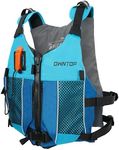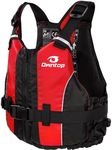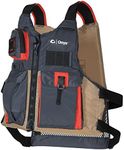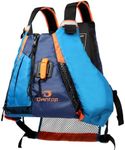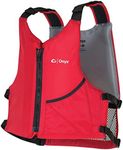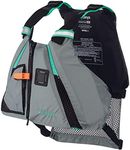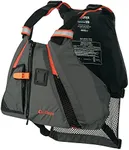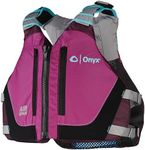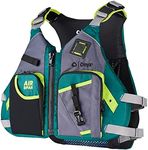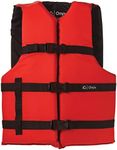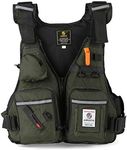Buying Guide for the Best Kayak Life Jackets
Choosing the right kayak life jacket is essential for both safety and comfort while out on the water. A good life jacket, also known as a personal flotation device (PFD), should keep you afloat in case you fall in, but it should also allow you to paddle freely and comfortably. When shopping for a kayak life jacket, it's important to consider how it fits your body, how easy it is to move in, and whether it has features that match your kayaking style and environment. Understanding the key specifications will help you make a choice that keeps you safe and happy during your adventures.Fit and SizingFit and sizing refer to how well the life jacket conforms to your body. This is crucial because a poorly fitting life jacket can ride up, restrict movement, or even come off in the water. Life jackets come in different sizes, often based on chest measurements and sometimes weight. Some are adjustable with straps, while others are more fixed. For the best fit, try on the jacket and make sure it feels snug but not tight, and that you can move your arms freely. If you plan to wear extra layers or paddle in warm weather, consider how your clothing will affect the fit.
BuoyancyBuoyancy is the amount of lift the life jacket provides to keep you afloat. This is measured in pounds or newtons. Most adult kayak life jackets offer enough buoyancy for general use, but if you are heavier or carry gear, you may need a higher buoyancy rating. For calm lakes and slow rivers, standard buoyancy is usually enough, but for rougher waters or if you are less confident in your swimming ability, a higher buoyancy can offer extra security.
Type/Class of PFDLife jackets are classified into different types based on their intended use and performance. For kayaking, most people use Type III or Type V PFDs. Type III is designed for general boating and paddling, offering good freedom of movement and comfort. Type V is often specialized for certain activities and may have extra features. Understanding the type helps you pick a jacket that matches your activity—Type III is usually best for recreational kayaking, while Type V might be better for whitewater or fishing.
Mobility and ComfortMobility and comfort are about how easy it is to move and paddle while wearing the life jacket. Kayak-specific life jackets often have larger armholes, thinner backs, and softer materials to prevent chafing and allow for a full range of motion. If you plan to paddle for long periods or do more active kayaking, prioritize a jacket that feels comfortable and doesn't restrict your movement.
Ventilation and MaterialVentilation and material refer to how breathable and comfortable the life jacket is, especially in warm weather. Some jackets have mesh panels or lightweight fabrics to help keep you cool. If you kayak in hot climates or during summer, look for a jacket with good ventilation to prevent overheating. The material should also be durable and quick-drying for comfort and longevity.
Pockets and Attachment PointsPockets and attachment points are features that let you carry small items like snacks, whistles, or safety gear. Some life jackets have multiple pockets, loops, or tabs for attaching accessories. If you like to have essentials close at hand or plan to fish from your kayak, look for a jacket with enough storage options to suit your needs.
VisibilityVisibility refers to how easily you can be seen by others on the water. Many life jackets come in bright colors or have reflective strips to make you more noticeable, which is important for safety, especially in busy or low-light conditions. If you often kayak in areas with boat traffic or at dawn or dusk, choose a jacket with high-visibility features.
